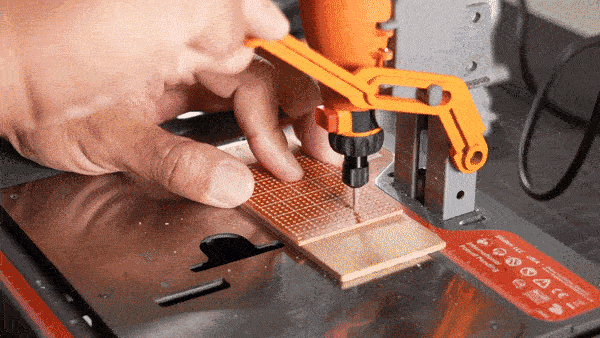Here is your monthly dose of my Canadian engineering news created for licensed and aspiring engineers, geoscientists and technicians in Canada.
- Polytechnique Montréal honouree, Sarah Houde, has been honoured for developing a sustainable energy system using hydrogen fuel cells and renewables to fight climate change. She's making a mark and inspiring change toward a more sustainable future.
- Postdoctoral Research Associate with UBCO's Dr. Haroon Mian and his team have developed engineered bacteria to produce hydrogen fuel from organic waste efficiently. This clean energy source offers potential for large-scale production and could significantly reduce greenhouse gas emissions.
XGO-2 is a Raspberry Pi-powered robotic dog with an arm. It is the world's first robotic dog with an arm and is designed for educational and entertainment purposes. XGO-2 has various functions, such as obstacle avoidance, face recognition, and more. It is an open-source project that allows users to expand and modify its capabilities.
Stellen DaVinci is a 14-in-1 power tool designed to simplify and streamline DIY projects by combining 14 common power tools into one compact and portable toolbox. Stellen Davinci includes a drill, saw, grinder, and other essential tools, making it the perfect solution for both professionals and DIY enthusiasts. The toolbox is made from high-quality materials and is built to last.

Respiray is a compact, wearable device to relieve airborne allergies. It uses advanced filtration technology to purify the air, providing relief from symptoms caused by allergens. Respiray is easy to use and can be worn comfortably around the neck. It is a convenient and effective solution for people with airborne allergies.
What technology or gadget are you currently enjoying and would recommend to other aspiring and licensed engineers? Let us know in the comments below.
Here are the news links to every Canadian Association. If there is anything beyond the standard stuff (elections, new appointments), I'll try to list them below. The news tends to slow down during certain parts of the year (e.g. Summer, X-Mas).
- APEGA News
- APEGS News
- APEY News
- ASET News
- EGBC News - EGBC is seeking presenters for the 2023 Annual Conference
- Engineers Nova Scotia News
- Engineers PEI News
- NAPEG News - Engineers Canada joins others in calling for changes to Iron Ring Ceremony
- PEGNL News
- PEO News - CPD details have emerged. Up to 30 hours/year are required. Reporting is due each year by Dec 31, starting in 2023. Use our free CPD guide to help you find the 30 hours.
What is a Network Engineer? Career Guide provides an overview of the role of network engineers and the skills necessary to be successful in the field, including networking concepts, security, and automation.
Head over to our recruitment page where you can send us your resume and enter our select candidate pool. We'll get in touch if your resume closely matches one of our client's open jobs.

Search all 300k eng. jobs | Use my 3 career hunting tips for better success.
On "How to Manage Engineers: Tips and Best Practices" offers strategies and advice for managers on how to effectively lead and manage engineers, including communication, delegation, and fostering a positive work environment.
The math and magic of origami: In this talk, Robert Lang explores the mathematics and origami engineering behind creating intricate shapes from a single sheet of paper.
Architecture that repairs itself?: Rachel Armstrong discusses how architecture can be designed to repair itself and support the environment, combining science, technology, and design. Living architecture is focused on sustainability and restoring the natural environment.
"Engineering is the closest thing to magic that exists in the real world."
— David Johnston, former Governor General of Canada.
Thanks for reading and have a great month!

Gavin Simone, P.Eng., PMP, LEED AP
Engineers, join my monthly Canadian engineering newsletter to stay informed & receive my free career resources cheat sheet!
100% privacy, I will never spam you!

Success! Now wait until the 1st of each month for your highly informative and fun engineering newsletter - Canadian edition.

What is your favourite scientific phenomenon or principle and how do you use it at work?
The Planning fallacy. it is apparent time and again that project planners are always the most optimistic and do not have a sufficient contingency.
The principle of heat transfer is a fundamental concept that is used in many aspects of building commissioning, including HVAC system commissioning. It helps to ensure that buildings are comfortable, energy-efficient, and safe.
Enthalpy. Used in the design of mine ventilation systems, and doing heat load studies.
My favourite phenomenon is Joule-Thomson effect. Fluids experience a change (drop or rise depending on the gas) in temperature after going through an adiabatic drop in pressure. This is due to the conservation of enthalpy of the fluid throughout the process.
I use it when I need to find out how much will CO2 gas drop in temperature as it goes through a pressure-reducing regulator. It’s common for regulators to form a layer of ice due to freezing vapor in the air resulting from the drastic drop in temperature as it gets in contact with the surface of the regulator.
As a mechanical engineer, I have a deep appreciation for Bernoulli’s principle, which states that as fluid velocity increases, pressure decreases. This phenomenon has a variety of real-world applications, from airplane wings to fuel pumps. At work, I often use Bernoulli’s principle to design and optimize fluid systems. By manipulating the velocity of fluid through pipes or valves, I can control the pressure and flow rate, ensuring that the system operates efficiently and effectively.
Electricity: I use it daily to power up my PC 🙂
The favorite one is the Centrifugal Pump Working Principle. It is used everyday in my life.
Black oxide: the process of coating ferrous materials, stainless steel, etc., increases the resistance of corrosion or abrasion.